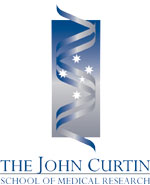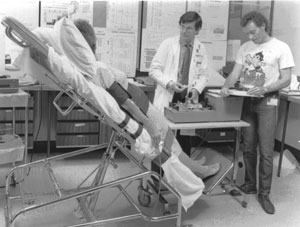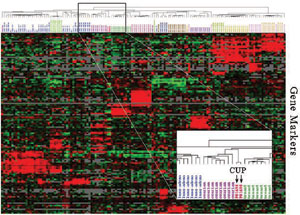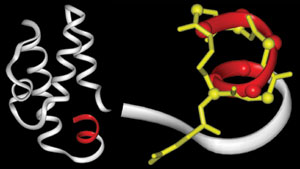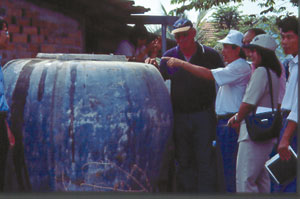During the 20th century Australians have benefited immensely from improvements in their general health and life expectancy. Our average life span has increased by 25 years, and even in the century’s dying decade we managed to gain another two years!1 As with many success stories, there have been numerous contributors, but there is no doubt that basic medical research has played a prominent part. Indeed, the interplay between basic research and advances in medicine is succinctly captured by the phrase “from bench to bedside” or by the term “translational highway”2 — an autobahn for taking basic research advances and transferring these into clinical practice.
The powerhouses of basic research in Australia are our universities and research institutes. Their financial underpinnings are the competitive grants provided by both government and non-government organisations. In 2002, for example, the National Health and Medical Research Council’s expenditure on health research and development was $276 million. Of this, the universities received $190 million (69%) and the medical research institutes received $74 million (27%).3
Since 1995, the Christmas issue of the Journal has regularly featured Australian medical research institutes, beginning with portraits of the Walter and Eliza Hall Institute in Melbourne and the John Curtin Institute of Medical Research in Canberra, and featuring most recently the Menzies Centre for Population Health Research in Hobart in 2001 (now the Menzies Research Institute). This year, we sought to explore a different avenue.
In 1998, the then Minister for Health, Dr Michael Wooldridge, empowered a prominent committee chaired by Peter Wills, then Chairman of the Garvan Institute of Medical Research, Sydney, to review health and medical research in Australia and report on strategies for these efforts in the first decade of the 21st century. In its final report,4 the committee identified a number of issues including:
the need to sustain and expand an effective health and medical research sector underpinned by innovative and high impact basic research;
a greater need for research that contributes directly to the health of the people and the healthcare system; and
the need for links between research and industry to capitalise on the potential commercialisation of research findings.4
In short, the report recommended an increased emphasis on “bench-to-bedside” research, focused on the health and economic wellbeing of the nation.
To gain some perspective on the vitality of this research in Australian medical research institutes, we recently conducted a poll of institute directors (see Box). Their responses are given on the following pages. What inferences can we draw from this snapshot?
Survey of Medical Research Institutes in Australia
The directors of Australian medical research institutes were contacted in September 2003 and asked : “Most Australian medical research institutes have been operative for more than 25 years and the theme we wish to pursue is . . . what has come out of [name of your institute] that has been translated into population health or clinical practice; ie, what has made it from ‘bench to bedside’? We want you to restrict these to two major impacts.”
Twenty-eight research institutes were approached and we accepted 22 submissions (Australian Capital Territory, 1; New South Wales, 5; Northern Territory, 1; Queensland, 2; South Australia, 1; Tasmania, 1; Victoria, 9; and Western Australia, 2).
Firstly, it is apparent that “bench-to-bedside” research is alive and well in Australian medical research institutes, and is wide-ranging in its scope. It includes public health advances relevant to South-East Asian and Australian Indigenous communities, clinical advances in areas such as assisted reproduction and cancer, and improved treatments for chronic disorders, such as diabetes or visual impairment in older people.
Secondly, this research is achieved by teamwork between clinician–scientists and scientists working together in a collegial spirit.
Thirdly, and most importantly, it takes time.
Finally, it is apparent that our research institutes are increasingly forging closer links with industry.
However, there is one overriding message — that success in basic research cannot be solely developed from imposed priorities and schemes. Research is driven by human imagination, inquisitiveness, insight and a generous sprinkling of serendipity. For, as observed by the Nobel laureate Albert Szent-Gyorgi, “. . . research means going out into the unknown with the hope of finding something new to bring home. If you know in advance what you are going to do or even to find there, then it is not research at all: then it is only a kind of honorable occupation.”5
In short, basic research has two defining features: uncertainty and surprise.6 As long as these twin principles are treasured in our medical research institutes, meaningful “bench-to-bedside” research will continue to advance the practice of medicine.
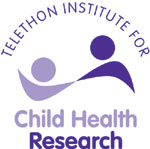 Folate supplementation
Folate supplementationPerhaps the longest established and best known research from the Institute that has had an enduring impact on health is the case–control study of neural tube defects conducted in Western Australia in the early 1980s by Carol Bower and Fiona Stanley.7 This showed that maternal dietary and supplemental folate intake around the time of conception protected against neural tube defects in the offspring. Further international studies showed that 70% of neural tube defects could be prevented by folate intake. Based on these findings, the Institute, in collaboration with the WA Health Department, embarked on a health promotion project in 1992, the first in Australia and one of the first in the world. There was an increase to 30% of women taking folic acid supplements periconceptionally, and a 29% fall in neural tube defects in WA.
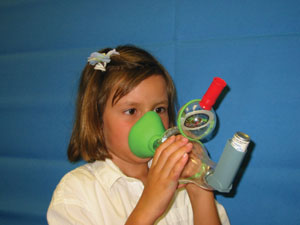
A more recent contribution from the Institute addresses a major problem for children with asthma, who typically show poor adherence to prescribed frequency and technique of inhaled medication. The Funhaler (Visiomed Group Ltd, Australia), invented by the Institute’s Paul Watt, is a small volume spacer device incorporating an incentive toy module. A pilot study showed that the Funhaler reduced problems in giving children asthma medication, improved child and parental adherence to the medication regimen and created a more positive attitude towards treatment.8 A recent grant from the US National Institutes of Health (US$700 000) supports further study of the device, which is due to be launched throughout Australia by the end of 2003.
Fiona Stanley, Director, TICHR
 AlphaCor artificial cornea
AlphaCor artificial corneaStarting in 1990, polymer chemistry research by Traian Chirila and Celia Hicks resulted in the world’s first soft artificial cornea, now marketed by the WA company, Argus Biomedical Pty Ltd. Hundreds of novel polymers were formulated and tested for physical characteristics, including optical clarity, tensile strength and elasticity as well as biocompatibility in tissue culture and after implantation in animals. Novel chemical methods were developed to create a porous outer rim into which human cells would grow and establish a firm bond. This porous outer rim was co-polymerised with the same polymer materials under differential conditions to create an optically clear centre via an interpenetrating network. Human trials of the novel artificial cornea started in 19979 and CE-Mark European approval was followed in 2002 by FDA approval in the United States.

In the early 1990s, Ian McAllister, Ian Constable and Dao-Yi Yu began developing a method to bypass the outflow from blocked retinal venous circulation, which commonly causes rapid loss of vision in older people with hypertension. After experiments in animals, Ian McAllister realised that a very powerful laser was required to break the structural barrier (called Bruch’s membrane) between the retinal and overlying choroidal circulation. In addition, rupture of the obstructed retinal vein was required to create an anastomosis between the two circulations and this was best achieved with a Yag cutting laser.10 Further experiments and observations identified a group of patients with incomplete central retinal vein occlusion for trials. Case–control studies showed that a successful shunt could be achieved in about two-thirds of the target population, and that visual acuity markedly improved as a result. This procedure has been taken up in a number of centres around the world. A randomised controlled clinical trial is under way in four Australian locations.
Ian J Constable, Director, Lions Eye Institute

 Mobilising myelopoiesis
Mobilising myelopoiesisBasic research at WEHI and LICR has had a profound impact on cancer treatment. Don Metcalf’s tenacious research at WEHI over three decades transformed understanding of blood cell production and haemopoietic diseases. He and his colleagues, including Nic Nicola (WEHI) and Tony Burgess (then at WEHI, later at LICR), purified two of the hormones involved in white blood cell production. Known as colony-stimulating factors (CSFs), these hormones (GM-CSF and G-CSF) accelerate white blood cell regeneration in patients undergoing chemotherapy or radiotherapy and have helped treat over 3.5 million patients worldwide.11 During the first clinical trials of CSFs at the Royal Melbourne Hospital (directed by George Morstyn, LICR), Uli Duhrsen (WEHI) and the team made the unexpected observation that CSFs mobilise blood stem cells into the bloodstream, a discovery which led to bone marrow transplantation being replaced by blood stem cell therapy.12 The CSFs are now finding new applications in in-vitro fertilisation and treatment of Crohn’s disease.
 Suppressing autoimmunity
Suppressing autoimmunityIan R Mackay, Head of the Clinical Research Unit at WEHI, formally defined the concept and key features of autoimmune diseases in a book co-authored by Frank Macfarlane Burnet in 1963.13 Despite considerable scepticism about the concept, Mackay pioneered the treatment of autoimmune (lupoid) hepatitis with the immunosuppressive drugs, azathioprine and prednisolone. This approach continues to be the gold-standard for immunosuppression and has saved the lives of countless patients with autoimmune hepatitis and other autoimmune diseases.
Suzanne Cory, Director, WEHI
Antony W Burgess, Director, LICR
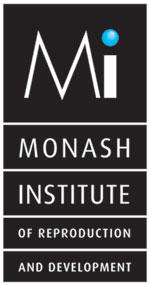 Concepts and conception
Concepts and conceptionAlan Trounson, together with Carl Wood and his colleagues from Monash University Department of Obstetrics and Gynaecology, pioneered studies of in-vitro fertilisation and other reproductive technologies for the management of human infertility. Building on the work of Edwards and Steptoe in the UK, they integrated ovarian stimulation into the routine IVF protocol,14 providing multiple oocytes for fertilisation. When combined with the capacity to freeze embryos these technologies contributed to improved IVF success rates.15 The Monash group also developed the conditions necessary for oocyte donation to become a routine procedure and extended the capacity for IVF to women without ovaries.16 The ability to biopsy a blastomere from an embryo17 and determine its genetic status18 has enabled preimplantation genetic diagnosis to be successfully performed for fertile couples with a history of genetically based disease.
In 40% of infertile men the cause of the spermatogenic defect is unknown, but the observation of small Y chromosomes in some of these men suggests a genetic cause. Scientists from the Institute, together with colleagues at Charles Drew University Los Angeles, further defined the deleted regions of the Y chromosome causing azoospermia or severely reduced sperm counts.19 These observations, together with others, showed that some Y chromosome deletions did not completely prevent sperm production, raising the possibility of using intracytoplasmic sperm injection (ICSI). The Institute’s scientists, together with colleagues at Monash IVF, demonstrated transmission of Y chromosome deletions from father to son by the use of ICSI.20 They also developed a routine clinical test to screen men with sperm counts less than 5 million/mL, enabling genetic counselling for couples where the man has a Y chromosomal deletion. Current estimates indicate that 3%–8% of men with idiopathic infertility have a Y chromosomal disorder.
David M de Kretser, Director, MIRD
 Noradrenaline in heart failure
Noradrenaline in heart failureIn the 1980s scientists led by Murray Esler developed a unique radiotracer technique for neurochemical quantification of sympathetic nervous system activity and measurement of the spillover of the sympathetic neurotransmitter, noradrenaline, from individual organs. With this advance they were able to isolate neurophysiological mechanisms in heart failure. At that time the accepted view was that the failing heart was functionally and anatomically sympathetically denervated and β-adrenergic blocking drugs were said to be contraindicated. An innovative series of research projects at the Baker showed that in many patients with heart failure the sympathetic nerves of the heart were, in reality, stimulated at an exceedingly high level.24 A prospective study of patients with severe heart failure showed that the cardiac sympathetic tone was the strongest predictor of death.25 This research provided the pathophysiological evidence for the use of β-adrenergic blocking drugs in cardiac failure.
Over the last 15 years it has become apparent that blockade of the RAS plays a central role in diabetic nephropathy, the leading cause of endstage renal disease in the developed world. Basic research, including that of Mark Cooper’s group, showed that, despite RAS suppression, intervention with angiotensin-converting enzyme inhibitors or angiotension II antagonists could reduce the functional and structural manifestations of diabetic nephropathy.26-30 Over the last decade the underlying molecular and cellular pathways whereby angiotensin II promotes renal injury have been unravelled and may provide new targets for further renoprotection. This basic research was the impetus for three landmark studies exploring blockade of the RAS in type 2 diabetic patients with incipient and overt renal disease. More recently, research has linked the RAS to other diabetic complications involving the retina, heart and vascular system. Multicentre clinical trials are now investigating the benefits of interrupting the RAS for diabetic complications at these extrarenal sites.
Garry Jennings, Director, BHRI
In the early 1990s the Institute pioneered the introduction of routine hepatitis B immunisation in Lombok, Indonesia, and demonstrated the feasibility of implementing universal hepatitis B vaccination without damaging other vaccine programs. This was the first demonstration of the usefulness of hepatitis B vaccination in a developing country’s immunisation program,21 and contributed to the models used now by Global Alliance for Vaccines and Immunization and the Gates Foundation to support universal hepatitis B immunisation in the world’s 70 poorest countries.
Since 1989 the Institute has championed the application of harm-reduction approaches to mitigate the impact of HIV and hepatitis C infection, and has played a major role in driving the acceptance and implementation of these approaches, especially in South-East Asia.22
The Institute has led the development of cheap and sustainable CD4 cell assays23 to support the widespread implementation of antiretroviral drug therapy to treat HIV infection in developing nations. It has also developed, and is now commercialising, new technologies for the diagnosis of hepatitis E and hepatitis A infections.
Steven L Wesselingh, Director, Burnet Institute
 In-situ gene expression
In-situ gene expressionIn the 1980s, researchers John Coghlan, Jennifer Penschow, Geoffrey Tregear and Hugh Niall developed the technique of hybridisation histochemistry using oligonucleotides for detection of in-situ gene expression in tissues.31,32 The Institute holds patents on this technique, which is now widely used for the diagnosis of viral and infectious diseases and in research.
A peptide comprising part of human parathyroid hormone (PTH[1-34]) was recently approved by the US Federal Drug Administration for the treatment of osteoporosis. Marketed by Eli Lilly & Co as Forteo, or teriparatide, it is the first approved agent for the treatment of osteoporosis that stimulates new bone formation. Hugh Niall and Geoffrey Tregear played a pivotal role in the discovery and development of PTH(1-34). Working initially at the Massachusetts General Hospital, Boston, and then at the Howard Florey Institute in the 1970s, they were the first in the world to isolate and sequence parathyroid hormone.33 They subsequently synthesised parathyroid hormone fragments and established that the amino terminal 1–34 region of the sequence had full biological activity.34 Forteo is the peptide originally designed and synthesised by Tregear.
Frederick A O Mendelsohn, Director, HFI
 Inhibin
InhibinA major focus of the Institute has been reproductive endocrinology, particularly the relationship between the hypothalamus, anterior pituitary and the gonads. The most significant outcome of this research was the first isolation, purification and characterisation of a new gonadal hormone, inhibin. Inhibin acts as a feedback signal regulating the secretion of follicle stimulating hormone (FSH) by the pituitary. This achievement was the result of collaboration between scientists as Prince Henry's, Monash University, St Vincent's Institute of Medical Research and La Trobe University. The major impact on clinical practice came with the finding that concentrations of inhibin were markedly elevated in the serum of patients with ovarian granulosa cell tumours or mucinous epithelial cancers.35-36 The marker commonly used for ovarian cancer diagnosis and monitoring, CA125, is not especially helpful in these two types of ovarian tumour. Work at the Institute has shown that combining inhibin and CA125 measurement can diagnose 95% of ovarian cancers.37-39 Inhibin measurement is now standard practice in following up patients with ovarian granulosa cell tumours.
Research on inhibin has also clarified the mechanisms involved in the hormonal changes in women as they approach the menopause, and has indirectly led to the realisation that measurements of FSH and oestrogen are of little value in the assessment of perimenopausal women.
Henry G Burger, Emeritus Director, PHIMR
 Automating amino-acid sequences
Automating amino-acid sequencesSt Vincent’s Institute has a long heritage of studying protein structure and function. The founding director, Pehr Edman (1957–1972), discovered how to sequence the order of amino acids within proteins and ways to automate this process.40 Protein sequencing enabled characterisation of proteins for diagnostic (eg, radioimmunoassay) and therapeutic use, as well as the unravelling of protein mutations in genetic diseases such as phenylketonuria and thalassaemia. Salmon calcitonin, for example, was sequenced using the Beckman commercial version of Edman’s automated sequencer by Hugh Niall (who had been a student of Edman) and then synthesised by Sandoz (now Novartis) for widespread therapeutic use in Paget’s disease. Obtaining amino acid sequence using Edman’s technology has been a necessary step in cloning many recombinant molecules used as drugs, such as growth hormone, tissue plasminogen activator and erythropoietin.
Jack Martin and his team discovered parathyroid hormone-related protein (PTHrP), a hormone secreted by cancers that causes the syndrome known as humoral hypercalcaemia of malignancy41 and contributes to bone metastasis. This discovery established a molecular explanation for this common clinical syndrome, and led to its accurate diagnosis by radioimmunoassay and immunohistochemistry for PTHrP. A humanised monoclonal antibody against PTHrP is now in Phase III clinical trials, having been developed by Chugai as a result of proof of principle supplied by this Institute’s research.
Bruce Kemp has made pivotal discoveries about the structure and function of protein kinases, particularly the amino-acid sequences used by kinases to interact with their substrates. Most recently these have been applied to adenosine monophosphate-activated protein kinase (AMPK), which Kemp and colleagues purified and sequenced.42 This is an enzyme involved in fuel metabolism that is activated by drugs that increase insulin sensitivity, including metformin and the glitazones.43 The Institute’s intellectual property in this area has been licensed to Mercury Therapeutics and Aventis, who are searching for new drugs that activate AMPK. The pharmaceutical industry has the protein kinases as one of its three top targets for drug development.
Thomas W H Kay, Director, SVIMR
 SIDS
SIDSBy the 1980s sudden infant death syndrome (SIDS) had become the commonest cause of death in postneonatal infants in Australia and some other developed countries. However, little was known about its causes or prevention. As early as 1944, it had been proposed that placing a baby prone (on the abdomen) might increase risk.44 Despite the gradual accumulation of retrospective evidence from case–control studies of an association between prone position and SIDS,45,46 concerns about recall bias (particularly at a time when many hospitals advised prone sleeping) limited the acceptance of sleeping position as a cause. Prospective data were needed.
The Menzies team reported the first prospective evidence, obtained from the Tasmanian infant cohort, in the Lancet in 1991,47 confirming a higher risk for infants sleeping in the prone position. This research work led to a rapid policy response. A national meeting in July 1991 provided a new recommendation that healthy infants should not sleep prone. SIDSAustralia incorporated the finding into health education advice to new parents. In Australia the number of SIDS deaths declined from 507 in 1990 to 101 in 2001 (rate, 1.93 to 0.41) — a fall of about 80%.48,49 Similar successful campaigns occurred internationally.
Subsequent research at the Menzies Institute has continued to inform international policy and contributed to a continued decline in SIDS deaths.50
Terence Dwyer, Director, MRI
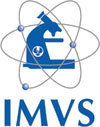 Cause and prevention of discitis after discography
Cause and prevention of discitis after discographyFor more than 50 years discography has been used to confirm a diagnosis of internal disc disruption and the presence of normal discs adjacent to the level of an intended spinal fusion. Discitis following discography is a serious complication and, although the presence of infection is occasionally confirmed, numerous authors have suggested that it is caused by a chemical or aseptic process.
Fraser, Osti and Vernon-Roberts showed that the injection of a single Staphylococcus epidermidis into an intervertebral disc in a sheep was sufficient to produce radiographic, macroscopic and histological discitis, but that organisms could not be isolated from the lesion after 6 weeks.51 They found also that in 7 patients with discitis no bacteria were isolated from the 3 biopsied 6 weeks after discography but bacteria were isolated in 3 of the 4 biopsied within 6 weeks.
These findings indicated that discitis after discography is initiated by needle-tip infection, but the causative bacteria are rapidly eliminated after the inflammatory destruction of the plate of bone separating the avascular disc from the richly vascular bone marrow of the vertebral body. Changing from a single needle lacking a stilette to stiletted needles and a two-needle technique reduced the incidence of discitis from 2.7% to 0.7%. Combining the two-needle technique with a single prophylactic dose of broad spectrum antibiotic effectively prevented discitis in a follow-up study.
Barrie Vernon-Roberts, Director,
Institute of Medical and Veterinary Science

The Institute for Molecular Bioscience was formed in 2000 by the amalgamation of the Centre for Molecular and Cellular Biology (which focused on mammalian cell and developmental biology) and the Centre for Drug Design and Development (which focused on pharmaceutical development), both at the University of Queensland.
In the past 6 years researchers at the IMB have discovered three candidate molecules to treat rheumatoid arthritis, chronic pain and neuropathic pain.
The first orally active small molecule C5a-receptor antagonist (an anti-inflammatory drug which blocks an important component of the complement system) was designed and developed by David Fairlie and Steve Taylor and has progressed to Phase II clinical trials for rheumatoid arthritis patients.52 The molecule was licensed to the spin-off company Promics to undertake full development.
A molecule, CVID (a conotoxin from Conus catus, a fish-eating marine cone snail on the Great Barrier Reef), which blocks N-type voltage-gated calcium channels, was discovered by Paul Alewood and Richard Lewis.53 The molecule, which has the potential to alleviate neuropathic pain, was licensed to AMRAD and Phase I/II clinical trials have been successfully completed in cancer patients with pain refractive to morphine treatment.
Another molecule from cone snails, MrIA (a conotoxin from Conus marmoreus), was discovered by the Lewis and Alewood team.54 It is a potent blocker in vitro and in vivo of the reuptake of noradrenaline by the noradrenaline transporter and has shown excellent efficacy in preventing chronic pain in rats. It is now under pre-clinical development by the spin-off company Xenome.
John J S Mattick, Director, IMB
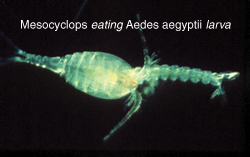
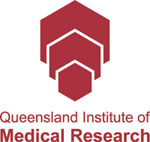 Controlling dengue in Vietnam
Controlling dengue in VietnamBrian Kay, head of mosquito control at QIMR, realised that the copepod predator of young mosquito larvae, Mesocyclops, had enormous potential for dengue fever control in Asia. Mesocyclops inhabit freshwater ponds and lagoons, but, from surveys in Vietnam, were also found in water storage containers (eg, concrete tanks, jars, wells).55
In 1989, Kay began working with Vu Sinh Nam from the National Institute of Hygiene and Epidemiology, Hanoi, to develop community-driven programs for dengue vector control, using new sampling technologies, key container prioritisation and Mesocyclops. Nine years later they reported the first eradication of Aedes aegypti without insecticide, in the 400 households of Phan Boi.56 By 2002 the program had expanded to 6 communes (11 675 households) in 3 other provinces.57 At the project’s completion, local leaders committed themselves to maintaining and expanding dengue control, supported by the national dengue budget. To date 40 of 46 communes (93 111 households and 386 544 people) are free of Ae. aegypti, and all 46 have no further reports of dengue and dengue haemorrhagic fever.
Michael Good, Michael Batzloff, Colleen Olive and Sri Sriprakash have been developing a vaccine to prevent group A streptococcus (GAS, Streptococcus pyogenes) infection and its associated diseases such as rheumatic fever. GAS is a serious problem in developing countries58 and in Indigenous communities of developed countries including Australia.59 The vaccine is based on a conformational peptide antigen from the conserved region of the M-protein.60 In preclinical studies the peptide was immunogenic in inbred mice. In outbred mice, the peptide was conjugated to the carrier protein, diphtheria toxoid, and formulated with the human-compatible adjuvant alum. Mice immunised with this formulation had significantly enhanced survival following challenge with several GAS serotypes.61 We have used our peptide in combination with several experimental intranasal adjuvants in outbred mice to induce a local mucosal immunoglobulin-A response capable of significantly reducing GAS colonisation of the throat following intranasal GAS challenge. We are now planning to commence the “Good Manufacturing Process” production of our peptide-conjugate/alum formulation for Phase I human clinical trials.
Michael F Good, Director, QIMR
Brian Kay, Director, Australian Centre for
International and Tropical Health and Nutrition
 Scabies and skin health:
Scabies and skin health:

Scabies and complicating streptococcal pyoderma are major causes of morbidity in Indigenous communities in central and northern Australia. The templates for communities to develop their own skin-health programs have resulted from a mix of clinical, public health and laboratory initiatives leading to evidence-based best practice. The first molecular genetics studies ever undertaken on scabies mites were specifically directed at determining whether current dog and human scabies infections are separate epidemics.62 This research enabled the focus of programs to be on prevention and treatment of scabies in children — rather than targeting the dogs. Community-based healthy skin programs have resulted in large decreases in both scabies and streptococcal pyoderma, and current initiatives are directed at sustaining the programs.63,64
Aboriginal people in many remote parts of Australia are experiencing an epidemic of diabetes, cardiovascular disease and end-stage renal disease. The introduction of a systematic pharmacotherapy program over several years on the Tiwi Islands (NT) addressing albuminuria, hypertension, dyslipidaemia and diabetes was associated with a marked fall in rates of renal failure and natural death, reversing a consistent historical trend for both to increase. Rates of the combined endpoints of renal failure and natural death per 100 person-years were 2.9 for the treatment group and 4.8 for the control group.65 Current challenges are how to resource and sustain such activities within the day-to-day clinic activities.
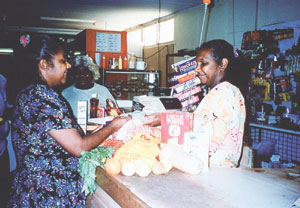
Poor nutrition in remote Aboriginal communities is linked to high rates of obesity, diabetes and cardiovascular disease. Two well evaluated community-based intervention programs to improve the quality of diets through improved quality of foods in the communities’ local stores have been accompanied by a marked reduction in risk markers for vascular disease across the adult populations. The focus of the Minjilang Nutrition Program66 and the Looma Healthy Lifestyle Program67 has been to reduce the high consumption of sugar and fat, and to increase consumption of fresh fruit and vegetables.
Kerin O’Dea, Director
Menzies School of Health Research
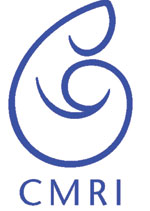 Developing microsurgery
Developing microsurgeryEarl Owen returned to Australia in 1967 from postgraduate studies in the UK where he had been involved in developing surgical techniques for whole-organ transplantations. An appointment to the Children’s Medical Research Institute from 1967–1970 as the James Fairfax Surgical Research Fellow provided him with the opportunity and resources to develop his expanding interests in the field of microsurgery. This had evolved from his appreciation of the importance of surgical repair of blood vessels and nerves in transplant survival.68 He designed or modified a range of instruments and magnifying devices which facilitated these procedures. His enthusiasm and skill in promoting the advantages of microsurgical techniques led to their rapid widespread adoption in Australia and internationally, particularly in the disciplines of plastic and reconstructive surgery.
In 1995 the Institute and the Children’s Hospital Westmead created a Gene Therapy Research Unit, based on a longstanding interest within the Institute in the use of retroviral gene vectors in biomedical research. Directed by Dr Ian Alexander, the unit has established a gene-vector production unit which is unique in Australia. In March 2002 in conjunction with the Hospital Necker in Paris, this unit and the Immunology Department of the Hospital treated a child with X-linked severe combined immunodeficiency by transducing the infant’s haemopoetic stem cells with a normal copy of the mutant gamma-c subunit of the interleukin receptors.69 This has resulted in a successful reconstitution of the T cell compartment and the patient remains free of infection 18 months later. While gene therapy is far from being routine clinical practice, there is no doubt that it will play a major role in future therapy of a range of diseases from single gene defects to cancer.
Peter B Rowe, Director, CMRI
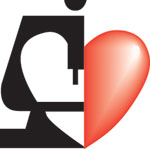 l-Arginine and vascular adhesion
l-Arginine and vascular adhesionResearch by Mark Adams, David Celermajer and Wendy Jessup, in a collaboration between the Institute and the Department of Cardiology at Royal Prince Alfred Hospital, found that l-arginine reduces human monocyte adhesion to vascular endothelium and endothelial expression of cell adhesion molecules.70 Subsequent clinical studies showed that oral l-arginine improves endothelium-dependent dilatation and reduces monocyte adhesion to endothelial cells in young men with coronary artery disease.71 This research has translated into the clinical use of oral l-arginine as a treatment in patients with intractable angina.
Len Kritharides and co-investigators are developing non-invasive tests for the presence of vascular disease. Using samples obtained from patients undergoing bypass surgery and coronary angiography, they found that coronary arteries release a number of molecules into the blood stream. One of these is haptoglobin, a protein not normally measured in patients with atherosclerosis,72 but which is present at elevated levels in the circulation in patients with advanced coronary disease. This non-invasive test has the potential to identify the presence of vulnerable atherosclerotic plaques before their rupture.
Philip J Barter, Director, Heart Research Institute
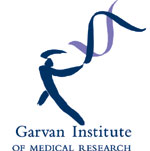 Diabetes and obesity
Diabetes and obesityIn 1973 a small team led by Les Lazarus at the Garvan developed the low-dose intravenous insulin infusion method to treat a major complication of diabetes, ketoacidosis.73 This has saved the lives of innumerable Australians and has been taken up around the world. Over the past 20 years, the diabetes research team, including Ted Kraegen, Lesley Campbell and Don Chisholm, has made major contributions to our understanding of the impact of lifestyle on type 2 diabetes. They were one of the first groups to show that exercise training improves whole-body insulin sensitivity.74 They were also one of the first to unravel the impact of dietary lipids on insulin sensitivity75,76 and to show that fat deposition in specific regions plays a key role in the development of insulin resistance.77 These findings have made major contributions to the management of this extremely complex and common human disease.
Garvan scientists led by Professor Rob Sutherland carried out an extensive series of studies which helped elucidate the mode of action of the breast cancer drug, tamoxifen.78 Garvan scientists pioneered research demonstrating the role of the cell cycle regulatory protein cyclin D1 in development and progression of breast cancer.79 Recently, this research was judged by the international ISI Essential Science Indicators as one of the top 20 advances (and most cited papers) in breast cancer in the past decade. Further work has confirmed this molecule as an adverse prognostic marker and therapeutic target in breast cancer.
John Shine, Executive Director, GIMR

Established 3 years ago, the ANZAC Research Institute is one of Australia’s youngest medical research institutes, located on the campus of Concord Hospital and affiliated with the University of Sydney. Its primary research focus is on ageing.
David Le Couteur’s observations that ageing is accompanied by obliteration of endothelial pores that allow the liver to metabolise circulating macromolecules80 has led him to a novel approach to examining the liver and postprandial hyperlipidaemia as pivotal elements linking ageing and cardiovascular disease.
Garth Nicholson’s discovery of the gene for hereditary sensory neuropathy81 provides an elegant and unique neurogenetic model for classical sensory neuropathies of leprosy and diabetes which both feature painless damage to joints and extremities.
Recently published work by David Handelsman first proved the efficacy of a hormonal male contraceptive using a prototype combination depot.82 This proof of principle has been adopted by a collaboration between two major multinational pharmaceutical companies, Organon and Schering, to develop a marketable product.
David J Handelsman, Director, ARI
 New antiviral strategies for herpes
New antiviral strategies for herpesThe herpes virus periodically reactivates from dormancy and is transported down sensory nerves to skin causing genital lesions. WMI virologists including Tony Cunningham, Russell Diefenbach and Monica Miranda first showed that the virus is transported down these nerves as two components, the inner core and outer (glyco) proteins, subsequently assembling at the nerve terminus. Transport along microtubules (the “railway tracks” of the nerve) was found to be mediated by the interaction of a virus core protein (US11) with a cellular protein, kinesin.83,84 The exact regions of the interaction were mapped and patented as a drug target. A collaboration with Pharmacia is now seeking small molecule inhibitors of this interaction as a new drug strategy for herpes.
The first success in vaccine development for genital herpes by GlaxoSmithKline (GSK) has just been reported. This development was partly guided by, and depended upon, key discoveries by WMI scientists, Tony Cunningham and Zorka Mikloska, who showed that the immune control of herpes lesions was mediated by an early influx of CD4 and later CD8 lymphocytes. Both cell populations secrete interferon gamma, which controls viral transmission from nerve to skin and viral mechanisms for evading immune control. The key viral stimulant for CD4 lymphocytes was glycoprotein D (gD).85 The GSK vaccine incorporated gD and an adjuvant to stimulate these mechanisms. This proved 75% successful.86
Cancer researchers at WMI, led by Richard Kefford and Graham Mann, have been unravelling melanoma susceptibility genes. They confirmed that the major melanoma gene, CDKN2A (“p16”), is located on chromosome 9p, and went on to perform the largest analysis of mutations in this gene in 132 Australian families.87 WMI researcher Helen Rizos and her team have established the importance of p14ARF, an alternate product of the CDKN2A gene, in the genesis of melanoma, and have recently described a number of highly novel functions of this molecule in regulating the cell cycle at several key points.88,89 Collaborative research between WMI and Nicholas Hayward of the Queensland Institute of Medical Research, together with the members of the international Melanoma Genetics Consortium, has enabled this genetic information to be translated into clinical guidelines for managing those at high risk of developing melanoma, including the use of genetic testing.90,91
Anthony Cunningham, Director, WMI
Received 22 January 2026, accepted 22 January 2026
- Martin B Van Der Weyden1
- The Medical Journal of Australia, Strawberry Hills, NSW.
- 1. Australia’s Health 2002. Canberra: Australian Institute of Health and Welfare, 2002: 361.
- 2. Schwarz K, Vilquin JT. Building the translational highway: towards new partnership between academia and the private sector. Nature Med 2003; 9: 403-495.
- 3. Exceptional returns. the value of investing in R & D in Australia. Canberra: Access Economics, September 2003: 12.
- 4. The virtuous cycle. Working together for health and medical research. Health and Medical Research Strategic Review Summary. Canberra: Commonwealth of Australia, December 1998.
- 5. Szent-Gyorgy A. Looking back. Perspect Biol Med 1971; Autumn: 1-5.
- 6. Thomas L. The lives of a cell. New York: Penguin Books, 1978: 115-120.
- 7. Bower C, Stanley FJ. Dietary folate as a risk factor for neural-tube defects: evidence from a case–control study in Western Australia. Med J Aust 1989;150: 613-619.
- 8. Watt P, Clements B, Devadason S, Chaney G. Funhaler spacer: improved adherence without compromising delivery. Arch Dis Child 2003; 88: 1-3.
- 9. Crawford GJ, Hicks CR, Lou X, et al. The Chirila keratoprosthesis: phase I human clinical trials. Ophthalmology 2002; 109: 883-889.
- 10. McAllister IL, Constable IJ. Laser induced chorioretinal venous anastomosis in non-ischaemic retinal vein occlusion. Arch Ophthalmol 1995; 113: 456-462.
- 11. Amgen Annual Report 2001: 14. Thousand Oaks, Calif: Amgen Inc, 2001. Available at: www.amgen.com/pdf/01AnnRep.pdf (accessed Oct 2003).
- 12. Gratwohl A, Baldomero H, Horisberger B, et al. Current trends in hematopoietic stem cell transplantation in Europe. Blood 2002; 100: 2374-2386.
- 13. Mackay IR, Burnet FM. Autoimmune diseases: pathogenesis, chemistry and therapy. Springfield, IL: Charles C Thomas, 1963.
- 14. Trounson A, Leeton J, Wood C, et al. Pregnancies in humans by fertilization in vitro and embryo transfer in the controlled ovulatory cycle. Science 1981; 212: 681-682.
- 15. Trounson A, Mohr L. Human pregnancy following cryopreservation, thawing and transfer of an eight cell embryo. Nature 1983; 305: 707-709.
- 16. Lutjen P, Trounson A, Leeton J, et al. The establishment and maintenance of pregnancy using in vitro fertilization and embryo donation in a patient with primary ovarian failure. Nature 1984; 307: 174-175.
- 17. Wilton L, Trounson A . Biopsy of pre-implantation mouse embryos: development of micromanipulated embryos and proliferation of single blastomeres in culture. Biol Reprod 1989; 40: 145-152.
- 18. Handyside A , Lesko J, Tarin J, et al. Birth of a normal girl after in vitro fertilization and preimplantation diagnostic testing for cystic fibrosis. N Engl J Med 1992; 327: 905-909.
- 19. Najmabadi H, Huang V, Yen P, et al. Substantial prevalence of microdeletions of the Y-chromosome in infertile men with idiopathic azoospermia and oligozoospermia detected using a sequence-tagged site-based mapping strategy. J Clin Endocrinol Metab 1996; 81: 1347-1352.
- 20. Cram D, Ma K, Bhasin S, Arias J, et al. Fertil Steril 2000; 74: 909-915.
- 21. Ruff TA, Gertig DM, Otto BF, et al. Lombok Hepatitis B Model Immunization Project: toward universal infant hepatitis B immunization in Indonesia. J Infect Dis 1995; 171: 290-296.
- 22. Peak A, Rana S, Maharjan SH, et al. Declining risk for HIV among injecting drug users in Kathmandu, Nepal: the impact of a harm-reduction programme. AIDS 1995; 9:1067-1070.
- 23. Crowe S, Turnbull S, Oelrichs R, Dunne A. Monitoring of human immunodeficiency virus infection in resource-constrained countries. Clin Infect Dis 2003; 37 (Suppl 1): S25-S35.
- 24. Hasking G, Esler M, Jennings G, et al. Norepinephrine spillover to plasma in congestive heart failure: evidence of increased overall and cardiorenal sympathetic nervous activity. Circulation 1986; 73: 615-621.
- 25. Kaye DM, Lefkovits J, Jennings GL, et al. Adverse consequences of high sympathetic nervous activity in the failing human heart. J Am Coll Cardiol 1995; 26: 1257-1263.
- 26. Cooper ME, Allen TJ, Macmillan PA, et al. Enalapril retards albuminuria and glomerular basement membrane thickening in experimental diabetic nephropathy. Diabetologia 1989; 32: 326-328.
- 27. Allen TJ, Cao Z, Youssef S, et al. The role of angiotensin II and bradykinin in experimental diabetic nephropathy: functional and structural studies. Diabetes 1997; 46: 1612-1618.
- 28. Cooper ME. Diabetic nephropathy: pathogenesis, prevention and treatment. Lancet 1998; 352: 213-219.
- 29. Cooper ME. Interaction of metabolic and haemodynamic factors in mediating experimental diabetic nephropathy. Diabetologia 2001; 44: 1957-1972.
- 30. Brenner BM, Cooper ME, de Zeeuw D, et al. Effects of losartan on renal and cardiovascular outcomes and mortality in patients with type 2 diabetes and nephropathy: Results of the Reduction of Endpoints in NIDDM with the Angiotensin II Antagonist Losartan (RENAAL) study. N Engl J Med 2001; 345: 861-869.
- 31. Coghlan JP, Penschow JD, Tregear GW, Niall HD. Hybridization histochemistry: use of complementary DNA for tissue localisation of specific mRNA populations. In: Doyle A, Mendelsohn FAO, editors. Receptors, membranes and transport mechanisms in medicine. Amsterdam: Excerpta Medica, 1984: 1-11.
- 32. Coghlan JP, Aldred P, Haralambidis J, et al. Review of hybridization histochemistry. Anal Biochem 1984; 149: 1-28.
- 33. Tregear GW, Van Rietschoten J, Greene E, et al. Solid phase synthesis of the biologically active N-terminal 1-34 peptide of human parathyroid hormone. Hoppe Seylers Z Physiol Chem 1974; 355: 415-421.
- 34. Reeve J, Hesp R, Williams D, et al. Anabolic effect of low doses of a fragment of human parathyroid hormone on the skeleton in postmenopausal osteoporosis. Lancet 1976; 1: 1035-1038.
- 35. Lappohn RE, Burger H, Bouma J, et al. Inhibin as a marker for granulosa-cell tumors. N Engl J Med 1989; 321: 790-793.
- 36. Healy DL, Burger HG, Mamers P, et al. Inhibin: a serum marker for mucinous ovarian cancers. N Engl J Med 1993; 329: 1539-1542.
- 37. Robertson DM, Cahir N, Burger HG, et al. Combined inhibin and CA125 assays in the detection of ovarian cancer. Clin Chem 1999; 45: 651-658.
- 38. Robertson DM, Stephenson T., Pruysers E, et al. Characterisation of inhibin forms and their measurement by an inhibin-subunit ELISA in serum from post-menopausal women with ovarian cancer. J Clin Endocrinol Metab 2002; 87: 816-824.
- 39. Robertson DM, Stephenson T, Pruysers E, et al. Inhibins/activins as diagnostic markers for ovarian cancer. Mol Cell Endocrinol 2002; 191: 97-103.
- 40. Edman P, Begg G. A protein sequenator. Eur J Biochem 1967; 1: 80-91.
- 41. Martin TJ, Allan EH, Caple IW, et al. Parathyroid hormone-related protein: isolation, molecular cloning, and mechanism of action. Recent Prog Horm Res 1989; 45: 467-506.
- 42. Mitchelhill KI, Stapleton D, Gao G, et al. Mammalian AMP-activated protein kinase shares structural and functional homology with the catalytic domain of yeast snf1 protein kinase. J Biol Chem 1994; 269: 2361-2364.
- 43. Kemp BE, Stapleton D, Campbell DJ, et al. AMP-activated protein kinase, super metabolic regulator. Biochem Soc Trans 2003; 31: 162-168.
- 44. Abramson H. Accidental mechanical suffocation in infants. J Pediatr 1944; 25: 404-413.
- 45. Fleming PJ, Gilbert R, Azaz Y, et al. Interaction between bedding and sleeping position in the sudden infant death syndrome: a population based case-control study. BMJ 1990; 310: 85-89.
- 46. Mitchell EA, Scragg R, Stewart AW, et al. Results from the first year of the New Zealand cot death study. N Z Med J 1991; 104: 71-76.
- 47. Dwyer T, Ponsonby A-L, Newman NM, Gibbons LE. Prospective cohort study of prone sleeping position and sudden infant death syndrome. Lancet 1991; 337: 1244-1247.
- 48. Australian Bureau of Statistics. Births, Australia. (Catalogue No. 3301.0.) Canberra: ABS, 2002.
- 49. Australian Bureau of Statistics. Causes of Death, Australia. (Catalogue No. 3303.0.) Canberra: ABS, 2002.
- 50. Dwyer T, Ponsonby A-L, Blizzard L, et al. The contribution of changes in the prevalence of prone sleeping position to the decline in sudden infant death syndrome in Tasmania. JAMA 1995; 273: 783-789.
- 51. Fraser RD, Osti OL, Vernon-Roberts B. Discitis after discography. J Bone Joint Surg 1987; 69-B: 26-35.
- 52. Woodruff TM, Strachan AJ, Dryburgh N, et al. Antiarthritic activity of an orally active C5a receptor antagonist against antigen-induced monarticular arthritis in the rat. Arthritis Rheum 2002; 46: 2476-2485.
- 53. Smith MT, Cabot PJ, Ross FB, et al. The novel N-type calcium channel blocker, AM336, produces potent dose-dependent antinociception after intrathecal dosing in rats and inhibits substance P release in rat spinal cord slices. Pain 2002; 96: 119-127.
- 54. Sharpe IA, Gehrmann J, Loughnan ML, et al. Two new classes of conopeptides inhibit the alpha1-adrenoceptor and noradrenaline transporter. Nature Neurosci 2001; 4: 902-907.
- 55. Nam VS, Yen NT, Holynska M, et al. National progress in dengue vector control in Vietnam: survey for Mesocyclops (Copepoda), Micronecta (Corixidae) and fish as biological control agents. Am J Trop Med Hyg 2000; 62: 5-10.
- 56. Nam VS, Yen NT, Kay BH, et al. Eradication of Aedes aegypti from a village in Vietnam, using copepods and community participation. Am J Trop Med Hyg 1998; 59: 657-660.
- 57. Kay BH, Nam VS, Tien TV, et al. Control of Aedes vectors of dengue in three provinces of Vietnam by use of Mesocyclops (Copepoda) and community–based methods validated by entomologic, clinical, and serological surveillance. Am J Trop Med Hyg 2002; 66: 40-48.
- 58. Steer AC, Carapetis JR, Nolan TM, Shann F. Systematic review of rheumatic heart disease prevalence in children in developing countries: the role of environmental factors. J Paediatr Child Health 2002; 38: 229-234.
- 59. Carapetis JR, Wolff DR, Currie BJ. Acute rheumatic fever and rheumatic heart disease in the top end of Australia's Northern Territory. Med J Aust 1996; 164: 146-149.
- 60. Brandt ER, Hayman WA, Currie B, et al. Human antibodies to the conserved region of the M protein: opsonization of heterologous strains of group A streptococci. Vaccine 1997; 15: 1805-1812.
- 61. Batzloff MR, Hayman WA, Davies MR, et al. Protection against group A Streptococcus by immunization with J8-diphtheria toxoid: contribution of J8- and diphtheria toxoid-specific antibodies to protection. J Infect Dis 2003; 187: 1598-1608.
- 62. Walton SF, Low Choy J, Bonson A, et al. Genetically distinct dog-derived and human-derived Sarcoptes scabiei in scabies-endemic communities in northern Australia. Am J Trop Med Hyg 1999; 61: 542-547.
- 63. Wong LF, Amega B, Connors C, et al. Outcome of an interventional program for scabies in an Indigenous community. Med J Aust 2001; 175: 367-370.
- 64. Wong LC, Amega B, Barker R, et al. Factors supporting sustainability of a community-based scabies control program. Aust J Dermatol 2002; 43: 274-277.
- 65. Hoy WE, Baker PR, Kelly AM, Wang Z. Reducing premature death and renal failure in Australian Aboriginals. A community-based cardiovascular and renal protective program. Med J Aust 2000; 172: 473-478.
- 66. Lee AJ, Bailey PV, Yarmirr D, et al. Survival tucker: improved diet and health indicators in an Aboriginal community. Aust J Public Health 1994; 18: 277-285.
- 67. Rowley KG, Su Q, Cincotta M, et al. Improvements in circulating cholesterol, antioxidants, and homocysteine after dietary intervention in an Australian Aboriginal community. Am J Clin Nutr 2001; 74: 442-448.
- 68. Owen ER. Microtechniques in organ transplantation. In: Wilkinson AW, editor. Recent advances in paediatric surgery. London: Churchill, 1969.
- 69. Hacein-Bey-Abina S, Von Kalle C, Schmidt M, et al. LMO2-associated clonal T cell proliferation in two patients after gene therapy for SCID-X1. Science 2003; 302: 415-419.
- 70. Adams MR, McCredie R, Jessup W, et al. Oral l-arginine improves endothelium-dependent dilatation and reduces monocyte adhesion to endothelial cells in young men with coronary artery disease. Atherosclerosis 1997; 129: 261-269.
- 71. Adams MR, Jessup W, Hailstones D, Celermajer DS. l-arginine reduces human monocyte adhesion to vascular endothelium and endothelial expression of cell adhesion molecules. Circulation 1997; 95: 662-668.
- 72. Matuszek MA, Aristoteli LP, Bannon PG, et al. Haptoglobin elutes from human atherosclerotic coronary arteries — a potential marker of arterial pathology. Atherosclerosis 2003; 168: 389-396.
- 73. Kidson W, Casey JH, Kreagen EW, Lazarus, L. The treatment of severe diabetes mellitus by insulin infusion. BMJ 1974; 2: 691-694.
- 74. James DE, Kraegen EW, Chisholm DJ. Effects of exercise training on in vivo insulin action in individual tissues of the rat. J Clin Invest 1985; 76: 657-666.
- 75. Storlein LH, Kraegen EW, Chisholm DJ, et al. Fish oil prevents insulin resistance induced by high fat feeding. Science 1987; 237: 885-888.
- 76. Borkman M, Storlein LH, Pan DA, et al. The relation between insulin sensitivity and the fatty-acid composition of skeletal muscle phospholipid. N Engl J Med 1993; 328: 238-244.
- 77. Carey DG, Jenkins AB, Campbell LV, et al. Abdominal fat and insulin resistance in normal and overweight women. Diabetes 1996; 45: 633-638.
- 78. Sutherland RL, Watts CK, Musgrove EA. Cell cycle control by steroid hormones in breast cancer: implications for endocrine resistance. Endocr Relat Cancer 1995; 2: 87-96.
- 79. Buckley MF, Sweeney KJ, Hamilton JA, et al. Expression and amplification of cyclin genes in human breast cancer. Oncogene 1993; 8: 2127-2133.
- 80. Le Couteur DG, Fraser R, Cogger VC, McLean AJ. Hepatic pseudocapillarisation and atherosclerosis in ageing. Lancet 2002; 359: 1612-1615.
- 81. Dawkins JL, Hulme DJ, Brahmbhatt SB, et al. Mutations in SPTLC1, encoding serine palmitoyltransferase, long chain base subunit-1, cause hereditary sensory neuropathy type I. Nat Genet 2001; 27: 309-312.
- 82. Turner L, Conway AJ, Jimenez M, et al. Contraceptive efficacy of a depot progestin and androgen combination in men. J Clin Endocrinol Metab 2003; 88: 4659-4667.
- 83. Penfold MET, Armati P Cunningham AL. Axonal transport of herpes simplex virus from neurone to epidermal cells: a specialised mode of transport. Proc Natl Acad Sci U S A 1994; 91: 6529-6533.
- 84. Diefenbach RJ, Miranda-Saksena M, Diefenbach E, et al. Herpes simplex virus tegument protein US11 interacts with conventional kinesin heavy chain. J Virol 2002; 76: 3282-3291.
- 85. Mikloska Z, Rückholdt M, Ghadiminejad I, et al. MPL and QS21 increase CD8 T lymphocyte cytotoxicity to HSV-2 ICP4 and ICP27 through IFN-γ and IL-12 production. J Immunol 2000; 164: 5167-5176.
- 86. Stanberry LR, Spruance SL, Cunningham AL, et al. Glycoprotein-D-adjuvant vaccine to prevent genital herpes. N Engl J Med 2002; 347: 1652-1661.
- 87. Holland EA, Schmid H, Kefford RF, Mann GJ. Mutation analysis of CDKN2A and CDK4 in 132 Australian familial melanoma kindreds. In: IVth World Melanoma Conference, Sydney, June 1997.
- 88. Rizos H, Darmanian AP, Holland EA, et al. Mutations in the INK4a/ARF melanoma susceptibility locus functionally impair p14ARF. J Biol Chem 2001; 276: 41424-41434.
- 89. Rizos H, Diefenbach E, Badhwar P, et al. Association of p14ARF with the p120E4F transcriptional repressor enhances cell cycle inhibition. J Biol Chem 2002; 278: 4981-4989.
- 90. Kefford RF, Newton Bishop JA, et al. Counseling and DNA testing for individuals perceived to be genetically predisposed to melanoma: a consensus statement of the Melanoma Genetics Consortium. J Clin Oncol 1999; 17: 3245-3251.
- 91. Kefford R, Bishop JN, Tucker M, et al. Genetic testing for melanoma. Lancet Oncol 2002; 3: 653-654.





